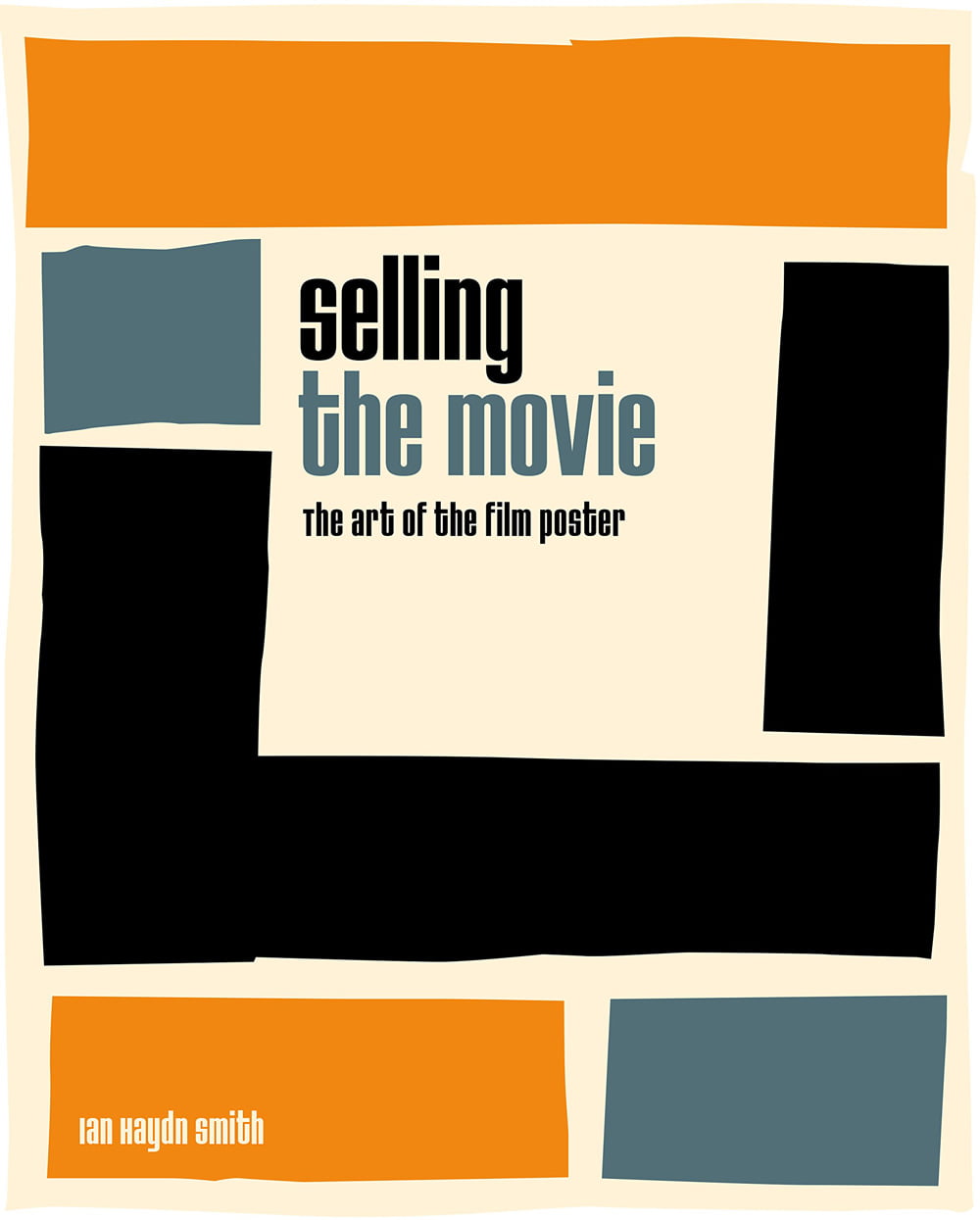Written by Ian Haydn Smith
If I were to analyse my enjoyment of film posters, I guess it’s the interaction of my love of films and the love of comic books, which distil so much into a stationary image that encapsulates so much more. When I regularly bought film magazines, film posters were a very common freebie and so I had rather a lot of them, and the first opportunity I had to decorate my own property, I completely covered the walls of the toilet with film posters, all the way up to the ceiling. I know that sounds a bit weird (it would get comments when people came round and used the lavatory) but I was happy. Reading Selling The Movie, a book all about film posters, gave me that same sense of happiness and contentment and enjoyment.
Smith, a film journalist and update editor of 1001 Movies You Must See Before You Die and editor of BFI Filmmakers magazine, has compiled a huge overview of a huge subject – he admits in his introduction that he scratches the surface because it is such a huge topic – but he has done a very good job of covering cinema history and film posters through the ages and the way that both have changed. And there’s a lot to cover.
The book starts from the origins of the modern movie poster in the mid-19th century with Jules Chéret in the belle époque in Paris, plus the parts played by Toulouse-Lautrec, Steinlein’s ‘Tournée du Chat Noir’ and Mucha’s work. Then each decade is covered, focusing on specific themes, styles, genres and directors/actors/designers before ending in ‘Posters of the decade’ to summarise each section. Covering all of movie history by picking on specifics is a tough job – I wouldn’t know where to start – but it does provide a fascinating view of the development of the poster in tandem with the shifts in culture and the sociopolitical landscape.
The book covers topics from German Expressionism to sex to the influence of art. There is time for specific genres (gangster, Westerns, noir French New Wave, horror, even Ealing comedies), specific actors (such as Charlie Chaplin and Clint Eastwood) and specific director studies (DW Griffith, Fritz Lang, Alfred Hitchcock, Spike Lee, Steven Spielberg). The book shows the progression of the film poster, from just showing what was in the film to the emphasis on the stars in the 1920 to the age of advertising in the 1950s and the end of classical Hollywood. But the best part is the focus on specific designers. From the Sternberg brothers through Eric Rohman, the book focuses on the likes of Bill Gold – eight decades of work and one of the most influential designers (Casablanca, The Searchers, Bonnie and Clyde, Dirty Harry, Unforgiven); the towering figure that is Saul Bass (I didn’t realise he designed the poster for West Side Story); the power of Stephen Frankfurt’s designs (Alien, Rosemary’s Baby); the huge number of posters by Robert McGinnis; the wonderful work by Richard Ansel, who died an untimely death at 37 (McCabe and Mrs Miller, The Sting, Raiders of the Lost Ark); the ‘Father of Modern Movie Posters’, Bob Peak (Apocalypse Now, Excalibur, Superman, Star Trek: The Motion Picture); and John Alvin (Blade Runner, Disney’s Beauty and the Beast, ET, Empire of the Sun). The book could have spent even more pages on them, but unfortunately it’s a huge tome as it is and there’s a lot more to cover, so we only get a page or two.
The book does have a few flaws. The main body text is more about the films themselves than the posters that they are describing – there is small text that describes all the posters that is more informative and on point – and the artists are not identified for all posters, which seems an oversight for such a book (the appendix includes a list of the various owners of each poster). And the poster choice seems to miss some things out. For example, in the section on the 1990s (which is the decade for me, when I really became a film fan), there are some of the great film posters – Pulp Fiction, Silence of the Lambs, LA Confidential, Reservoir Dogs, Do The Right Thing, Trainspotting – but where is The Usual Suspects, one of the iconic posters? Is it too cool to include?
But then you turn the page and there are more fabulous posters to admire (the book has a full page for the poster for Enter The Dragon, so I’m happy), and the same on the next page and the next page – the book is packed with so many beautiful images, you can excuse the flaws. Smith has done an admirable job of introducing the topic in such an engaging fashion; he even includes the famous anecdote about the poster for The Towering Inferno, so the film critic Mark Kermode will be happy. Plus, in a book about film posters, Smith avoids mentioning ‘Matthew McConaughey leaning against co-stars in his film posters’ and the orange/blue contrast posters, so you can tell he’s serious. For this review, I have read the book and enjoyed the content, but I can just flick through this lovely book and see page after page of beautiful promotional cinematic art through the ages. This book is packed with glorious film posters and is a great overview of the subject. In fact, I think I’ll go have another quick skim through it …
Disclosure: this book was provided for review purposes.




